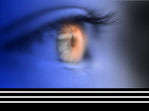Nirala: Reason
to smile
By Anis Shakur
Syed Muzaffar Husain Zaidi was renowned
for his jokes and gimmicks since his earlier days. In the year 1959, he was invited to an entertainment program in Karachi.
In that function, young Muzaffar entertained the public with his comedy. The audience was all praise for Muzaffar’s
one particular comedy, in which he acted as a professional pigeon caretaker. That caretaker’s entire life revolves around
pigeons.
A year later, Syed Muzaffar Husain Zaidi changed his name to Nirala and debuted in the 1960 film ‘Aur bhi
gham hain’, producer, Danish Dairwee, director, A.H. Siddiqui.
Interestingly enough, in his debut movie, Nirala played the role of that same pigeon-lover, who was obsessed with
pigeons. Nirala’s interest was to create laughter, and he was highly successful at it.
The film ‘Saperan’, 1961, put his movie career on upswing; producer, Shabab Kiranvi, director, Daud
Chand.
Nirala struggled hard and made a name for himself as a comedy actor in director S.A. Ghaffar’s 1963 film
‘Mr. X’.
Nirala’s portraits of innumerable comic roles were unsurpassed in their honesty and refreshment. The 1963
movie ‘Shararat’ is a good example of his magnetic presence.
With the advent of television in 1964, Nirala started participating in television commercials, notably in the ‘Lipton’
tea advertisement with Rozina.
Nirala was a rich and rare assortment of a humorist. Nirala and Lehri appeared together in the 1964 film ‘Choti
behan’, directed by A.H. Siddiqui.
Nirala went on to work in more than one hundred films in his twenty-five year movie career from 1960 to 1985.
Nirala’s real break came in the 1964 mega hit movie, ‘Heera aur pathar’. Thus, he eventually
attained prominence through ‘Heera aur pather.’
By a considerable ensemble of familiar casts, including Nirala, the 1965 film ‘Aisa bhi hota hai’,
boasts all the right ingredients at precisely the right time.
Nirala’s comic character in the 1966 film ‘Joker’, spotlights one of Pakistan’s multifaceted
talents.
Likewise, audience were drawn to Nirala’s 1966 movie ‘Honahar.’
Perhaps, the moviegoers applauded loudest for Nirala’s role in the 1966 first platinum jubilee film of Pakistan,
‘Armaan’. In ‘Armaan’, director Pervez Malik made Nirala’s look divinely simple. He was dubbed
as Waheed Murad’s best friend and he fell in love with Rozina.
Nirala cracked humor using his typical facial expression, which also became one of his greatest personal strength.
His unrivalled ability to create fun and frolic enabled him to perform in bright, vivid movies like the 1967 movie, ‘Ehsaan.’
In ‘Ehsaan’, Nirala played the crazy guy, ‘papan papito’, sporting long hair.
Nirala drew plaudits all around especially with his role in the 1967 film ‘Phir subha ho gee.’ The
stories of his movies were in the end bittersweet at best, which Nirala handled in his plainspoken style. The 1967 film ‘Doraha’
is a case in point.
Nirala played his role with great effect in the three movies below:
‘Zameen ka chand’, ‘Bin badal barsaat’, ‘Chori chori.’
Moreover, Nirala’s reputation began to grow with the theatrical release of the three movies below:
‘Insaan aur gadha’, ‘Nawab Zada’, ‘Ghar Damaad.’
He brought out all his wit in the three films below:
‘Raja’, ‘Ujala’, ‘Unjanay Raastay.’
It is impossible to overlook the star power of the four 1967 films below, and Nirala did a wonderful job in those
films as well:
‘Waqt ki pukar’, ‘Meray Laal’, ‘Meray bachhay meri Aankhein.’
In the film ‘Ustadoan kay ustaad’, 1967, Nirala joined forces with another cinematic legend, Charlie.
One of Pakistan’s favorite humorist, Nirala’s electrifying performance gave the films respectability
and true importance. The film ‘Jahan tum wahan hum’, 1968, is a quick example.
The 1969 film ‘Assalamu alaikum’ brought more laurels to Nirala. Those were the golden days for Nirala,
when the audience loved to watch his movies. They were down right rejoicing—glorying!
Nirala’s three movies below of 1970 are stuffed with laughs:
‘Naseeb apna apna’, ‘Phir chand niklay ga’, ‘Jhug gaya Aasmaan.’
Incidentally, we have a huge number of people who relate to Nirala’s style of comedy. His acting flourished
with the release of the 1971 film ‘Neend hamari khwab tumharay.’
Nirala was really tuned into the rhythm of the particular genre—romantic comedy. He garnered more popularity
in the three 1973 movies below:
‘Bay eman’, ‘Anmol’, ‘Sehray kay phool.’
Nirala was essentially a natural artist, and there were genuinely sweet moments between him and the willing audience.
The 1974 movies ‘Dushman’ and ‘Usay deikha usay chacha’ are good examples of Nirala’s
artistry.
Nirala was a talker with a reputation for wit. The 1975 films ‘Ganwaar’, and ‘Dilruba’
are appropriate examples of his wit.
In real life, Nirala was an amazingly humble person. The magnificence of his comic presentation is quite evident
in the 1976 movie ‘Sacchai.’
His sense of humor remained intact till his last days. The 1977 movie ‘Suha jora’, made Nirala more
famous than ever.
In the 1980s, Nirala moved to Karachi and made stage appearances with comedian Umer Sharif.
Bad habits die-hard. Nirala was fond of chewing beetle leaf or paan. Excessive use of paan took its toll on his
health, which deteriorated with the passage of time.
Nirala’s sad demise on December 9, 1985, in Karachi, robbed Pakistanis of one of their finest comedy actor.
Nirala’s last film was ‘Choroan ka badshah’, which was released three years after his death in
1988.
To
think of Nirala after so many years is to embark on an exciting ride that harkens back to the magnificent magic of yesteryear!

